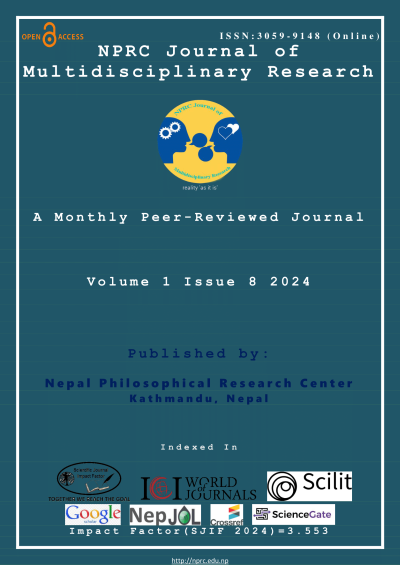Adoption and Trust in QR Code Technology: Insights from Kathmandu
DOI:
https://doi.org/10.3126/nprcjmr.v1i8.73040Keywords:
Descriptive study, QR code adoption, QR technology, privacy & securityAbstract
The rapid advancement of technology has revolutionized payment methods globally, and QR (Quick Response) codes have emerged as a pivotal tool in this transformation. Originating in 1994 for inventory management, QR codes have extended their utility to various sectors, including retail, marketing, logistics, and education. In Nepal, the adoption of QR codes gained momentum during the COVID-19 pandemic as a contactless payment method, enhancing convenience and safety for consumers. Despite the growing popularity of QR codes, limited research has been conducted on their usage, especially in the context of developing countries like Nepal. This study aims to examine the factors influencing QR code usage in Kathmandu Valley, focusing on user perceptions, behavior, and adoption patterns. Employing a descriptive research design, primary data was collected through structured questionnaires administered to 124 respondents aged 18 and above, using convenience sampling. The data was analyzed using SPSS, with descriptive statistics such as mean and standard deviation employed to evaluate respondents' attitudes and behaviors toward QR code usage. The findings revealed that the majority of respondents had a positive view of QR codes, with a significant portion using them for payments within the past six months. Younger age groups and students constituted the largest demographic among users, underscoring the influence of digital-savvy generations on the adoption of technology. Key factors influencing usage included convenience, time-saving benefits, and ease of use, though concerns about privacy and security persisted. The study concludes that QR codes have significantly impacted payment systems in Kathmandu, providing insights for businesses, marketers, and policymakers to enhance user experience and address security concerns. Novelty lies in its contribution to understanding QR code adoption in a developing country, offering valuable perspectives and practical implications for stakeholders and setting the foundation for future research in this domain.
Downloads
Downloads
Published
How to Cite
Issue
Section
License
Copyright (c) 2024 The Author(s)

This work is licensed under a Creative Commons Attribution-NonCommercial 4.0 International License.
This license enables reusers to distribute, remix, adapt, and build upon the material in any medium or format for noncommercial purposes only, and only so long as attribution is given to the creator.





